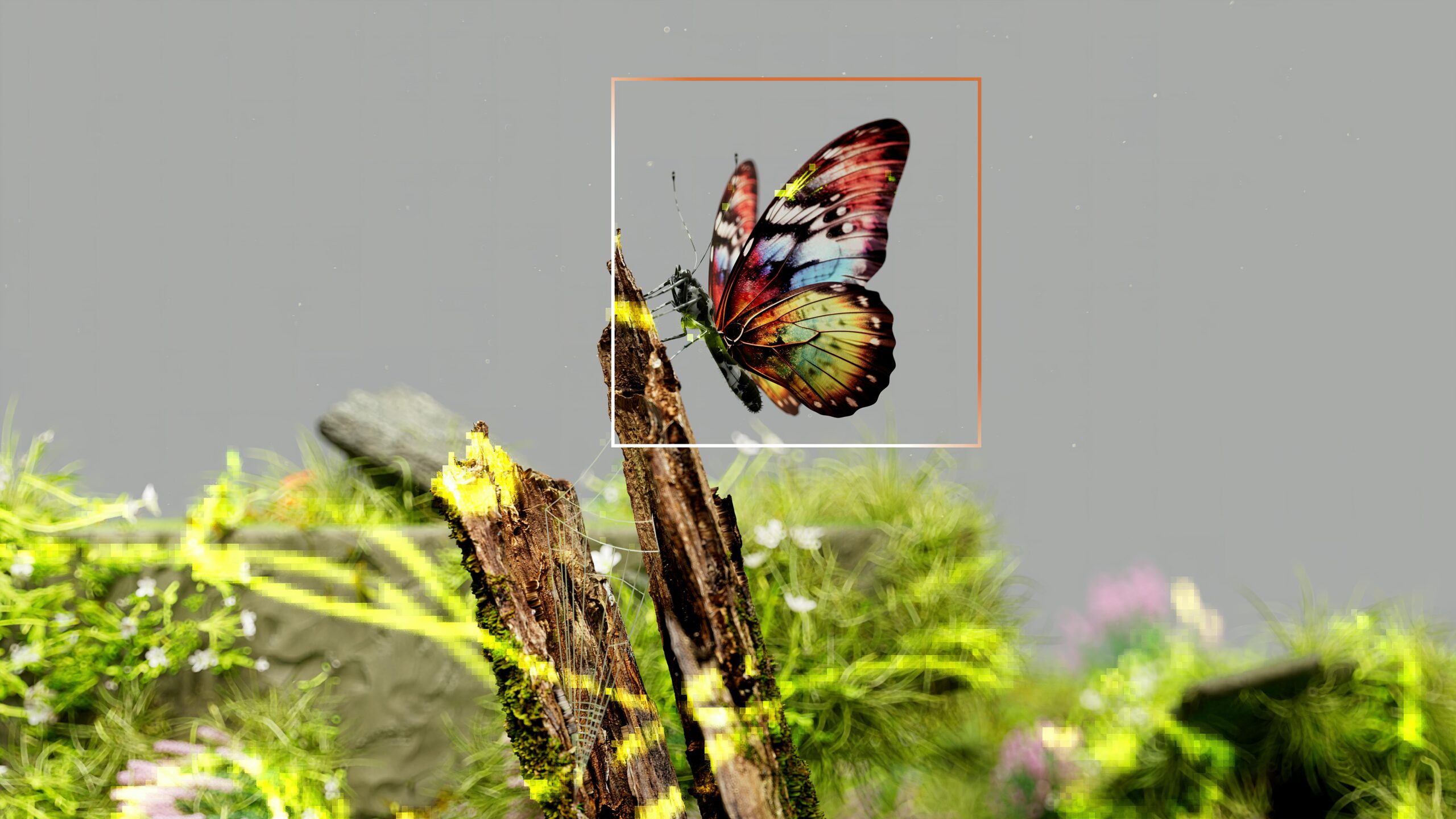Beneath our feet lies an invisible network more powerful than the internet—a living web connecting trees, plants, and fungi in ways that reshape our understanding of nature’s intelligence. 🌿
For centuries, humans have viewed forests and ecosystems as collections of individual organisms competing for survival. Yet groundbreaking research in mycology and ecology has revealed a far more sophisticated reality: plants and fungi engage in complex communication and resource-sharing through underground fungal networks known as mycorrhizal associations. This biological internet, sometimes called the “Wood Wide Web,” demonstrates that unity and cooperation may be nature’s most powerful evolutionary strategies.
The implications of mycorrhizal communication extend far beyond academic curiosity. Understanding these networks offers practical solutions for agriculture, forest management, climate change mitigation, and ecosystem restoration. As we face unprecedented environmental challenges, learning from nature’s collaborative blueprint has never been more critical.
🍄 The Hidden Architecture of Underground Networks
Mycorrhizal fungi form symbiotic relationships with approximately 90% of all plant species on Earth. These microscopic threads, called hyphae, extend from plant roots into the surrounding soil, creating networks that can span entire forests. A single teaspoon of healthy forest soil may contain several miles of these fungal filaments, connecting dozens of plants in an intricate web of biological communication.
The relationship operates as a sophisticated exchange system. Plants produce sugars through photosynthesis and share them with their fungal partners. In return, fungi provide plants with water and essential nutrients—particularly phosphorus and nitrogen—that their roots cannot access alone. This ancient partnership, which evolved over 400 million years ago, literally made terrestrial plant life possible.
But the exchange goes far beyond simple nutrition. Recent studies have documented fungi facilitating communication between plants, allowing them to send warning signals about pest attacks, share resources with struggling neighbors, and even recognize their own offspring. This challenges fundamental assumptions about plant intelligence and ecological competition.
Decoding the Language of Forests
Scientists have discovered that mycorrhizal networks transmit various types of information between connected plants. When one tree suffers an insect attack, it can send chemical alarm signals through the fungal network to neighboring trees. These warnings trigger defensive responses in connected plants, allowing them to produce protective compounds before the pests arrive.
Research led by ecologist Suzanne Simard at the University of British Columbia revealed that “mother trees”—large, established trees at the forest center—use mycorrhizal networks to nurture younger trees, especially their own offspring. These hub trees can identify their kin through chemical signatures and preferentially send them carbon, nutrients, and defense signals. When mother trees are dying, they often transfer substantial resources to the next generation through these fungal connections.
The communication isn’t limited to distress signals and resource allocation. Plants also appear to share information about environmental conditions, seasonal changes, and optimal growth strategies. This collective intelligence allows forests to function as superorganisms, with individual trees acting more like neurons in a distributed brain than isolated competitors.
The Chemistry of Connection
The mechanisms underlying mycorrhizal communication involve complex biochemical processes. Plants release specific organic compounds into the rhizosphere—the soil zone immediately surrounding roots—that attract compatible fungal species. Once connected, the network transmits signals through electrical impulses, chemical gradients, and possibly even quantum processes that scientists are just beginning to understand.
Different mycorrhizal species create distinct types of networks with varying characteristics. Ectomycorrhizal fungi, common in temperate and boreal forests, form dense sheaths around root tips and create extensive soil networks. Arbuscular mycorrhizal fungi, which associate with most crop plants and tropical species, penetrate root cells directly and form more localized connections. Each type offers unique benefits and communication capabilities to its plant partners.
🌲 Ecosystem Resilience Through Fungal Unity
The presence of robust mycorrhizal networks dramatically increases ecosystem resilience—the ability to withstand and recover from disturbances. Connected plant communities show greater resistance to drought, disease, pollution, and climate variability than isolated individuals. This resilience emerges from the network’s capacity to redistribute resources, share defense responses, and maintain functional diversity.
During drought conditions, plants with access to mycorrhizal networks survive at significantly higher rates than unconnected plants. The fungal hyphae access water from a much larger soil volume than roots alone, and the network can channel water from areas with better moisture to struggling plants. This hydraulic redistribution helps entire communities survive stress periods that would otherwise cause widespread mortality.
Mycorrhizal diversity also enhances resilience. Ecosystems hosting multiple fungal species demonstrate superior stability because different fungi offer complementary services and respond differently to environmental changes. When one fungal species declines due to specific stressors, others can compensate, maintaining network function and ecosystem services.
Natural Succession and Forest Development
Mycorrhizal networks play crucial roles in ecological succession—the process by which ecosystems develop over time. Early colonizing plants establish initial fungal connections that later species utilize to establish themselves. This mycorrhizal succession creates pathways for ecosystem development and influences which species can successfully join the community.
In disturbed landscapes, the presence or absence of mycorrhizal networks determines recovery trajectories. Sites with intact fungal networks recover faster and develop greater biodiversity than severely disturbed areas where the underground infrastructure has been destroyed. This understanding has profound implications for conservation and restoration strategies.
Agricultural Applications of Mycorrhizal Intelligence
Modern industrial agriculture has largely disrupted mycorrhizal relationships through tillage, monocultures, fungicides, and excessive fertilization. The resulting loss of soil biological networks has contributed to declining soil health, increased pest problems, and dependence on chemical inputs. However, a growing movement toward regenerative agriculture seeks to rebuild these natural partnerships.
Farmers implementing mycorrhizal-friendly practices report remarkable benefits including reduced fertilizer requirements, improved drought tolerance, enhanced pest resistance, and increased yields. Techniques that support mycorrhizal development include minimizing soil disturbance, maintaining continuous living roots through cover crops, increasing crop diversity, and eliminating or reducing fungicidal chemicals.
Inoculating crops with beneficial mycorrhizal fungi has become an increasingly popular practice. Commercial inoculants containing specific fungal species can jump-start network development, particularly in degraded soils. Research shows these additions work best when combined with management practices that support fungal growth rather than relying solely on inoculation.
Designing Polyculture Systems
Understanding mycorrhizal networks informs the design of polyculture agricultural systems—growing multiple crop species together rather than in monoculture. Different plants host different fungal communities, and strategic combinations can create synergistic networks that benefit all members. For example, pairing deep-rooted perennials with shallow-rooted annuals creates complementary resource niches while establishing multi-layered fungal connections.
Indigenous agricultural systems worldwide have long utilized these principles without scientific terminology. Traditional milpa agriculture, forest gardens, and intercropping systems inherently support diverse mycorrhizal communities and the ecosystem services they provide. Modern research increasingly validates these time-tested approaches.
🌍 Climate Solutions Hidden in Fungal Networks
Mycorrhizal fungi play underappreciated but vital roles in carbon sequestration and climate regulation. These organisms move vast quantities of carbon from the atmosphere—via plant photosynthesis—into soil, where it can remain stored for decades or centuries. Some estimates suggest mycorrhizal networks may store as much as 70% of forest carbon in soil organic matter and fungal biomass.
The chemical structure of certain compounds produced by mycorrhizal fungi makes them particularly resistant to decomposition. Glomalin, a protein produced by arbuscular mycorrhizal fungi, can persist in soil for decades, representing a significant long-term carbon sink. Protecting and expanding mycorrhizal networks could be among our most powerful nature-based climate solutions.
Unfortunately, soil degradation and deforestation are releasing this stored carbon back into the atmosphere. When forests are cleared or soils are severely disturbed, fungal networks die and decompose, contributing to greenhouse gas emissions. Conservation strategies that prioritize maintaining intact mycorrhizal networks protect not just biodiversity but also critical carbon stocks.
Restoration Ecology and Network Reconstruction
Ecological restoration efforts increasingly recognize that successfully re-establishing plant communities requires rebuilding the underground fungal infrastructure. Simply planting trees without considering mycorrhizal partnerships often results in poor survival and slow growth. Progressive restoration approaches now include fungal inoculation, preserving remnant networks, and designing plantings that support mycorrhizal development.
Techniques like “soil transplantation”—moving small amounts of soil from healthy ecosystems to restoration sites—can introduce beneficial fungal communities and accelerate network establishment. This biological approach complements physical and chemical restoration methods, addressing the living soil component essential for long-term ecosystem function.
Biomimicry: Learning from Fungal Intelligence
The principles governing mycorrhizal networks offer inspiration for human systems design. Computer scientists have studied fungal network topology to improve internet routing algorithms and transportation infrastructure. The networks demonstrate remarkable efficiency in resource distribution while maintaining resilience through redundancy—qualities highly desirable in human-designed systems.
Urban planners increasingly recognize that cities should function more like ecosystems, with circular resource flows and interconnected systems rather than linear consumption patterns. The mycorrhizal model suggests that building connections between system components—whether neighborhoods, infrastructure networks, or social groups—creates emergent benefits beyond what isolated units could achieve.
In organizational management, the mycorrhizal network metaphor illustrates how decentralized, cooperative structures can outperform rigid hierarchies. Just as forests thrive through distributed intelligence and resource sharing, human communities and organizations may flourish by fostering horizontal connections and mutual support rather than only top-down control.
🔬 Frontiers in Mycorrhizal Research
Scientific understanding of mycorrhizal communication remains in its early stages, with exciting discoveries emerging regularly. Researchers are investigating whether electrical signals transmitted through fungal networks represent a form of information processing analogous to neural networks. The possibility that plant-fungal communities possess distributed cognition challenges conventional boundaries between intelligence and biological systems.
Advanced imaging technologies now allow scientists to observe mycorrhizal networks in unprecedented detail. Techniques like isotope tracing reveal resource flows between plants in real-time, while genetic sequencing identifies fungal species and their ecological roles. These tools are revealing complexity far beyond what was imaginable just decades ago.
Questions remain about the extent of intentionality in mycorrhizal communication. Do plants and fungi make decisions, or do their behaviors result from automatic biochemical responses? Regardless of interpretation, the functional outcomes—cooperation, resource sharing, and collective resilience—demonstrate natural selection favoring collaborative over purely competitive strategies.
Practical Steps for Supporting Mycorrhizal Networks
Individuals can contribute to supporting mycorrhizal networks through everyday choices and actions. Gardeners should minimize soil disturbance, avoid synthetic fungicides, and grow diverse plant communities. Selecting native species adapted to local conditions naturally supports compatible fungal partners and creates more resilient gardens.
Supporting forest conservation and responsible forestry practices protects established mycorrhizal networks. Clear-cutting destroys these systems, while selective harvesting that maintains forest cover can preserve network function. Consumer choices—from wood products to food—influence land management practices globally.
Education plays a vital role in shifting perspectives about ecosystems from competitive battlegrounds to cooperative networks. Sharing knowledge about mycorrhizal communication helps build appreciation for nature’s complexity and the importance of protecting soil health and biodiversity.
The Philosophy of Interconnection 🌐
Beyond practical applications, mycorrhizal networks invite philosophical reflection on interconnection and individuality. Western thought traditionally emphasizes discrete objects with clear boundaries, but mycorrhizal research reveals that organisms exist within networks of relationships that fundamentally shape their identity and function. A tree is not just an individual organism but a node in multiple overlapping networks—fungal, bacterial, animal, and atmospheric.
This relational understanding resonates with Indigenous knowledge systems that have long recognized the interconnectedness of all life. Many traditional cultures describe nature as a web of relationships rather than a collection of objects, an understanding that modern science is finally beginning to validate and appreciate.
The mycorrhizal metaphor also offers lessons for human society. Just as ecosystems thrive through diversity and mutual support, human communities flourish when we recognize our interdependence and actively cultivate connections across differences. The strongest systems—natural or social—balance individual autonomy with collective cooperation.

Cultivating a Networked Future
As humanity faces interconnected challenges—climate change, biodiversity loss, soil degradation, and social fragmentation—the mycorrhizal model offers both practical solutions and conceptual guidance. These ancient partnerships demonstrate that cooperation creates outcomes impossible for isolated individuals, that diversity strengthens rather than weakens communities, and that information-sharing enhances collective intelligence.
Implementing mycorrhizal principles across agriculture, forestry, restoration ecology, and urban planning could dramatically improve ecosystem health while providing critical services like carbon sequestration, water filtration, and food production. The technology already exists—it evolved over hundreds of millions of years and operates beneath our feet in every healthy ecosystem.
The challenge lies not in developing new technologies but in recognizing and supporting the sophisticated biological systems already functioning in nature. This requires humility—acknowledging that evolution has solved problems we’re still struggling to understand—and respect for the living world’s inherent intelligence.
By learning from mycorrhizal networks, we can design more resilient agricultural systems, restore degraded landscapes more effectively, and reimagine human communities based on principles of mutual support rather than competition. The power of mycorrhizal communication reveals that unity in nature isn’t just a poetic concept—it’s a fundamental principle that creates stronger, more resilient ecosystems. Understanding and applying this principle may be essential for creating a sustainable future where both human and natural communities can thrive. 🌱
Toni Santos is an eco-spirituality researcher and planetary healing writer exploring how earth-based rituals, nature-centred philosophy and sacred ecology reconnect humanity with the living planet. Through his work on environment, consciousness and ritual, Toni examines how our relationship with Earth influences our awakening and actions. Passionate about land-wisdom, ritual practice and ecological integration, Toni focuses on how spiritual life can emerge from ecological awareness and how healing flows from land, water and community. His work highlights the union of ecology, mind and spirit — guiding readers toward a more grounded, relational, and sacred life. Blending ritual studies, environmental philosophy and ecological design, Toni writes about the human-earth story — helping readers understand how living systems, community and meaning intertwine in planetary healing. His work is a tribute to: The sacred connection between humanity and Earth’s living systems The power of ritual to rekindle land-memory and collective renewal The vision of ecology as sacred, relational and transformational Whether you are a ritual practitioner, ecological thinker or planet-healer, Toni Santos invites you to explore the path of planetary awakening — one ritual, one ecosystem, one transformation at a time.




